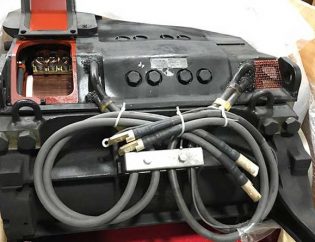
In This Article You Will Read:
- Introduction
- The Functionality of a Locomotive
- Types of Locomotive Traction Motors
- Classification based on Mounting Configuration:
- Conclusion
Introduction
Supco Canada Railways Supply Group is a quality provider of remanufacturing services for rotating electrical apparatus for Rail and Mass Transit, including different types of traction motors in EMD locomotives. Among several metrics of sustainable growth, the sustenance of a country’s rail system is of monumental importance. The advantages of the system in the context of developing nations range from economic to social.
However, as advantageous as it may sound, you might already be intrigued by the following questions from a technical perspective :
- What is the functionality of a locomotive?
- What are traction motors in locomotives?
- How does an EMD traction motor work?
- What are Types Of Traction Motors and, how are they differentiable?
So, let’s take you through an immersive piece of content that will surely answer all your queries !
The Functionality of a Locomotive
Locomotives are currently divided into two broad categories, namely:
- 1Pure electric
- 2Diesel locomotives
Pure electric locomotives are powered by a catenary. A catenary is a system of overhead electric lines that power the entire route’s locomotive using the pantograph. The principle of operation is nowhere close to that of a conventional internal combustion engine coming onto diesel locomotives.
The principle of operation is the ignition of diesel in the IC engine, which drives the pistons. The pistons which are mounted using a connecting rod to a crankshaft rotate it. The crankshaft is connected to the generator’s shaft. It converts the mechanical power to electrical power and delivers it to the electric traction motors directly linked with the wheels of the locomotive.
The diesel engine’s use allows for a suitable way to power the electric motors instead of having to incorporate an external supply of electric power, which would make rail transport highly uneconomical.
You might be intrigued that this method of powering traction motors used instead of a conventional mechanical system, i.e. IC engine powering a mechanical drivetrain?
This is because a mechanical transmission in the case of a gigantic train system is highly inefficient both in terms of maintenance and mechanical efficiency. Just imagine a mechanical transmission involving a clutch system trying to push a train from a dead stop; It will surely not be a good choice.
Having discussed the basics of the functionality, we will now focus on this article’s core topic, i.e. diesel locomotive traction motor, its functionality, types, and locomotive traction motor parts along with some examples.
Contact our experts
Don’t hesitate to contact us!
Types of Locomotive Traction Motors

There are two metrics to classify traction motors, i.e. based on the type and mounting configuration. There are three main types of motors used in the locomotive industry:
- 1DC traction motors
- 2AC traction motors with Variable Frequency Drives (VFD)
First, let us briefly discuss the details of each type of motor.
1DC Traction Motor :
Main Parts | Rotating armature consisting of a set of coils wound tightly around a shaft. |
Working Principle | When a current is passed through the windings, the magnetic field’s interference and current causes the armature to turn based on Faraday’s Law of Electromagnetism. The series connection between the armature and fixed field is known as series-wound. |
Advantages | Low resistance due to series winding. This ultimately means higher current flow which accounts for stronger magnetic fields turning the motor’s driveshaft with greater torque. |
Disadvantages | Higher current flow is not necessarily always advantageous. More increased current flow means more risk to the distribution system in the locomotive. |
2AC Traction Motors with Variable Frequency Drives:
Main Parts | Rotor, Stator, Windings, VFD System |
Working Principle | The working principle of the AC traction motor is relatively simple in the modern era. Advancements in microelectronics have enabled VFD systems to control torque and speed much more easily than DC traction motors. |
Advantages | |
Disadvantages | Back EMF is produced in AC motors based on Lenz’s Law, which tends to reduce the motor’s effective speed as rotation increases. |
If you are more interested you can read our comprehensive article on comparison AC & DC traction motor called AC Traction Motors vs. DC Traction Motors
Having discussed the type of motors and their details, let us introduce you to the classifications of locomotive traction motors based on mounting configurations and some notable examples of motors.
Classification Of Types Of Traction Motors based on Mounting Configuration:
- Direct Axle Control: A single traction motor is used to drive an axle with dual wheels. This is the most common type in the locomotive industry.
- Train’s Bogie Control: A single traction motor is used to drive all the wheels on a bogie. The most inefficient method among the three as it requires traction motors with a higher power rating thus, a larger size. The drivetrain complexity and maintenance is also a point of concern in this configuration.
- Individual Wheel Control: One traction motor for one wheel. However, this configuration is highly uneconomical.
Conclusion
We hope this article served as a comprehensive guide in the diverse and dynamic field of Different Types Of Traction Motors. We focused on both the general and technical aspects while maintaining reader friendliness. Supco Canada has an extensive inventory of different types of Traction Motors. When you are in the market and looking to purchase or replace a locomotive traction motor, give us a call and let us help you with the right traction motor to keep your locomotive running smoothly.
Contact our experts
Don’t hesitate to contact us!




